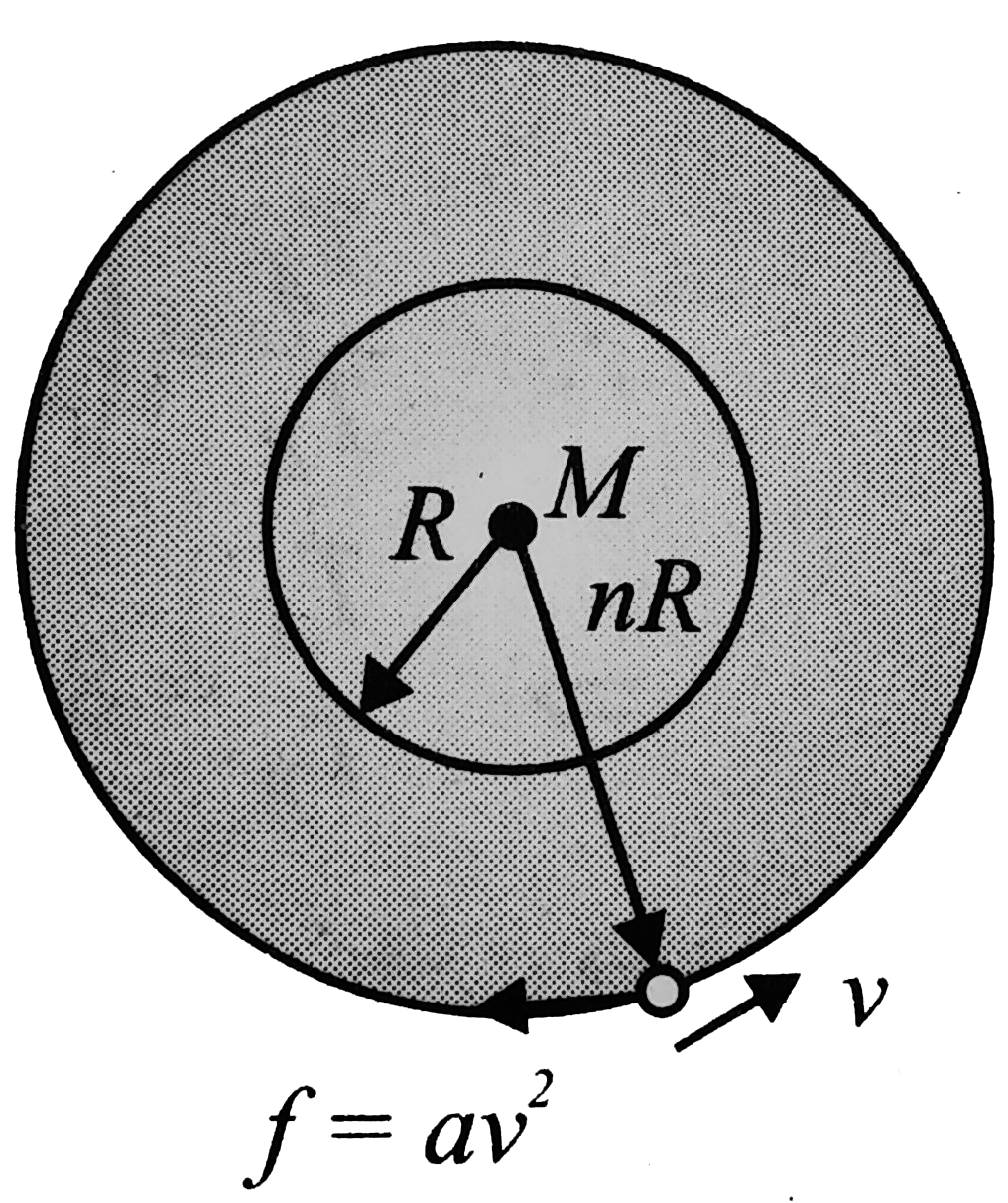An artificial satellite (mass m) of a planet (mass M) revolves in a circular orbit whose radius is n times the radius R of the planet in the process of motion the satellite experiences a slight resistance due to cosmic dust. Assuming the force of resistance on satellite to depend on velocity as F=av2 where 'a' is a constant caculate how long the satellite will stay in the space before it falls on to the planet's surface.
The correct Answer is:m√R(√n−1)a√(GM)
F=mdvdt=av2……….i
At t=0, when the satellite is at a distance nR from the centre of the earth. Velocity of the satellite is
vi=√GMnR
At time t when the satellite is
vi=√GMnR
vf=√GMR
from eqn i mdvv2=adt

Integrating both the sides we get
mintvfvidvv2=a∫t0dt⇒m[v−2+1−2+1]vfvi=at
on solving we get t=m√R(√n−1)a√(GM)
Topper's Solved these Questions
- GRAVITATIONBOOK - CENGAGE PHYSICSCHAPTER - GRAVITATIONEXERCISE - Single Correct
122 Videos
- GRAVITATIONBOOK - CENGAGE PHYSICSCHAPTER - GRAVITATIONEXERCISE - Multiple Correct
24 Videos
- GRAVITATIONBOOK - CENGAGE PHYSICSCHAPTER - GRAVITATIONEXERCISE - Exercise 6.4
16 Videos
- FLUID MECHANICSBOOK - CENGAGE PHYSICSCHAPTER - FLUID MECHANICSEXERCISE - INTEGER_TYPE
1 Videos
- KINEMATICS-1BOOK - CENGAGE PHYSICSCHAPTER - KINEMATICS-1EXERCISE - Integer
9 Videos
Similar Questions
An artificial satellite of the Moon revolves in a circular orbit whose radius exceeds the radius of the Moon η times. In the process of motion the satellite experiences a slight resistance due to cosmic dust. Assuming the resistance force to depend on the velocity of the satellite as F=av2, where α is a constant, find how long the satellite will stay in orbit until it falls onto the Moon's surface.
View SolutionAn artificial satelite of the moon revolves in a circular orbit whose radius exceeds the radius of the moon η times. The process of motion the satelite experiences a slight resistance due to cosmic dust. Assuming the resistance force to depend on the velocity of the satellite as F=αv2, where α is a constant, find how long the satellite will stay in orbit until it falls onto the moon's surface.
View Solution
Knowledge Check
Suppose an earth satellite, revolving in a circular orbit experiences a resistance due to cosmic dust. Then
Aits kinetic energy will increaseBits potential energy will decreaseCit will spiral towards the earth and in the process its angular momentum will remain conservedDit will burn off ultimatelyA satellite whose mass is M , is revolving in circular orbit of radius r around the earth. Time of revolution of satellite is
AT∝r5GMBT∝√r3GMCT∝√rGM2/3DT∝√r3GM1/4Two satellites of masses M and 16 M are orbiting a planet in a circular orbitl of radius R. Their time periods of revolution will be in the ratio of
A1:1B1:4C4:1D1:16
A satellite of mass M revolving in a circular orbit of radius rs around the earth of mass M has a total energy E. then, its angular momentum will be
View SolutionTwo satellites of masses M and 4M are orbiting the earth in a circular orbit of radius r. Their frequencies of revolution are in the ratio of
View SolutionA satellite is revolving in circular orbit of radius r around the earth of mass M. Time of revolution of satellite is
View SolutionTwo satellite of mass m and 9m are orbiting a planet in orbits of radius R. Their periods of revolution will be in the ratio of
View SolutionTwo satellites of masses 80 kg and 120 kg revolve round a planet in circular orbits of radii 16 R and 9 R respectively, where R is radius of the planet. The ratio of the speeds of satellites will be
View Solution
